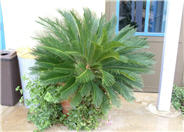
Common name:Sago-Palm
Botanical name:Cycas revoluta
Sago Palm resembles small palms; it is evergreen. It can slowly grow to 10'. It is used for a tropical effect and also looks great in planters. In the low desert, light shade and additional moisture are best. Side sprouts can form multi-trunked individuals. Apply fertilizer at leaf expansion. This plant has few pests.
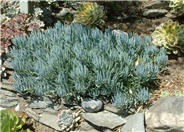
Common name:Kleinia
Botanical name:Senecio mandraliscae
This succulent perennial will grow to about 1.5' tall and 2' wide. It has curved, bluish gray leaves that are about 3.5" long and very slender.
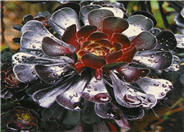
Common name:Dark Leaf Aeonium
Botanical name:Aeonium arboreum 'Zwartkop'
Aeonium arboreum 'Zwartkop' is a succulent perennial that is used for accenting effect. Aeonium arboreum grows 3' tall and wide. Each branch has a 6"-8 " wide rosette of dark green, fleshy leaves.The flowers are yellow in clusters.
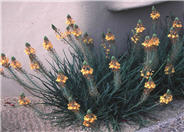
Common name:Dwarf Orange Bulbine
Botanical name:Bulbine frutescens 'Hallmark'
This bulbine is the compact variation of yellow bulbine. This plant grows to about 1' tall by 1'-2' wide. Orange flowers bloom almost all year long. Plants stay evergreen, but will freeze to the ground in the event of serious frost. However, frost- damaged plants will regrow in spring. Delicate coppery orange flowers with fluffy yellow centers are on tall spikes that rise above the foliage. This selection is free flowering in spring, summer and fall.
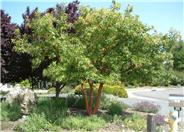
Common name:Strawberry Madrone
Botanical name:Arbutus 'Marina'
The 'Marina' has gorgeous bark, with leaves that are smaller and not as glossy as Pacific Madrone. Its flowers are pink, borne in pendant clusters in the summer. The fruit is large, red and quite ornamental. The plant should be grown in sun to part shade, with little or no summer watering when established. The 'Marina' prefers good drainage. -Monterey Bay Nursery
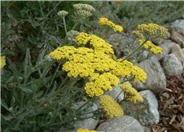
Common name:Allan Bloom Hybrd
Botanical name:Achillea 'Moonshine'
Long, straight stems with pale yellow flowers are apparent on the mats of green to grey-green leaves of this plant, which are flatter and less divided than those of the Achillea millefolium. The yarrow propagate easily from rooted cuttings or division, which should be performed in the early spring or fall. Following bloom, one should dead head the plant and divide the clumps when it appears crowded.
| Designer: Los Angeles Arboretum | Succulent Border |
Photographer: GardenSoft |
Soils and Compost:
Incorporate compost 6" into your soil to retain water, reduce compaction, feed earthworms, and provide valuable nutrients to your plants.
Water Saving Tip:
Apply a layer of mulch around plants to reduce moisture loss.
Choose organic mulches, such as shredded bark, compost or aged sawdust.
Integrated Pest Management:
Drip and other smart irrigation delivers water directly to roots, allowing no excess water for weeds.

